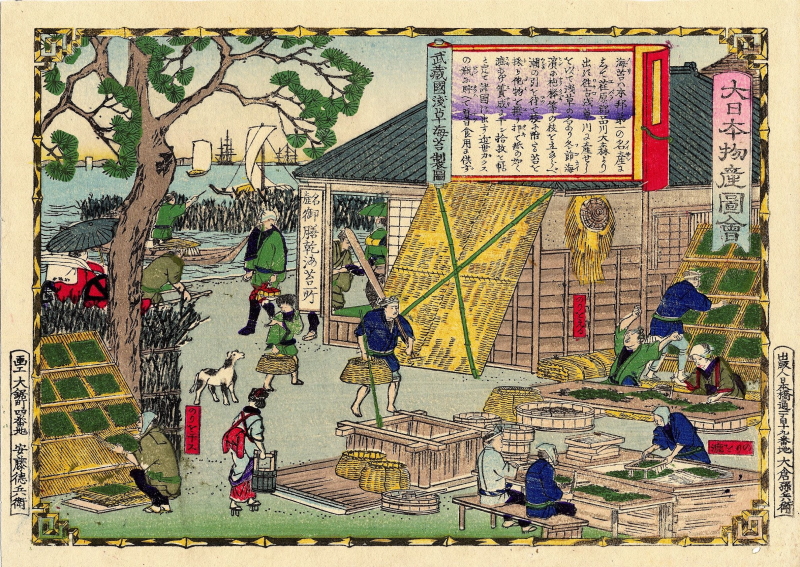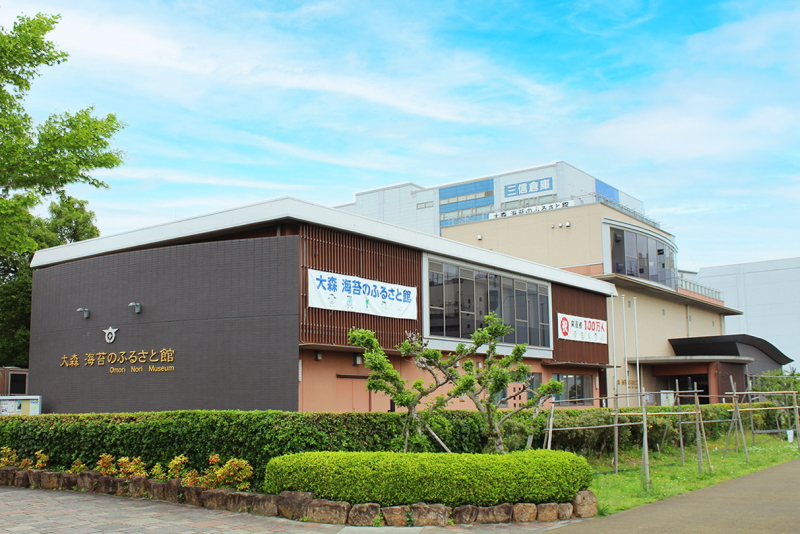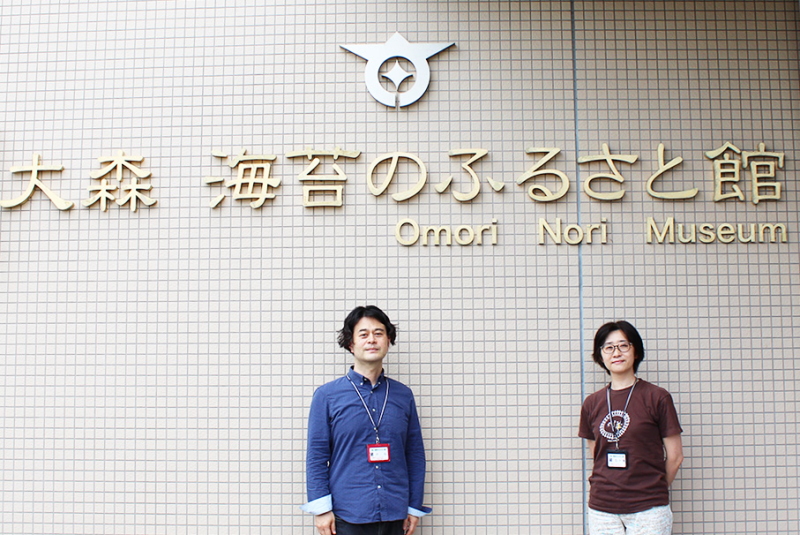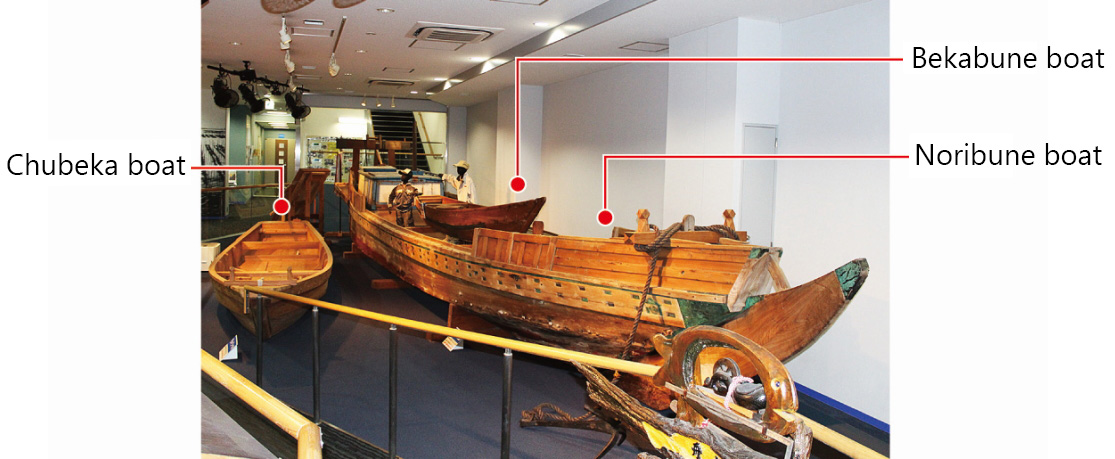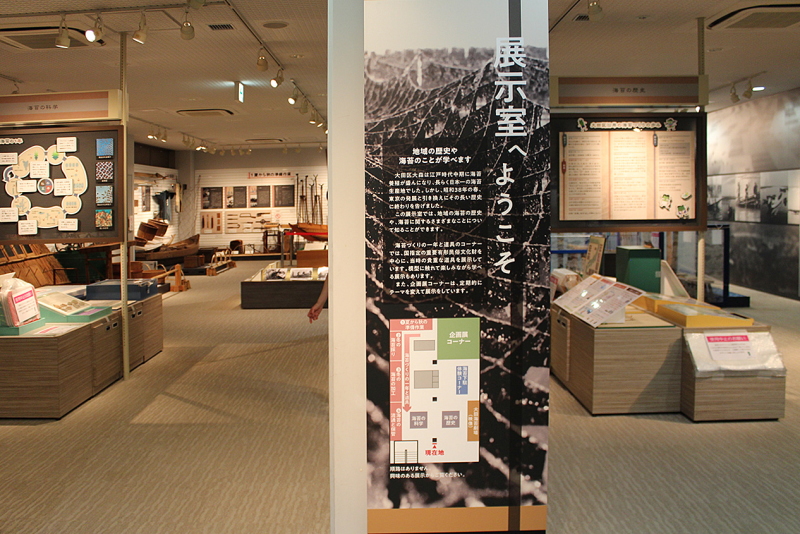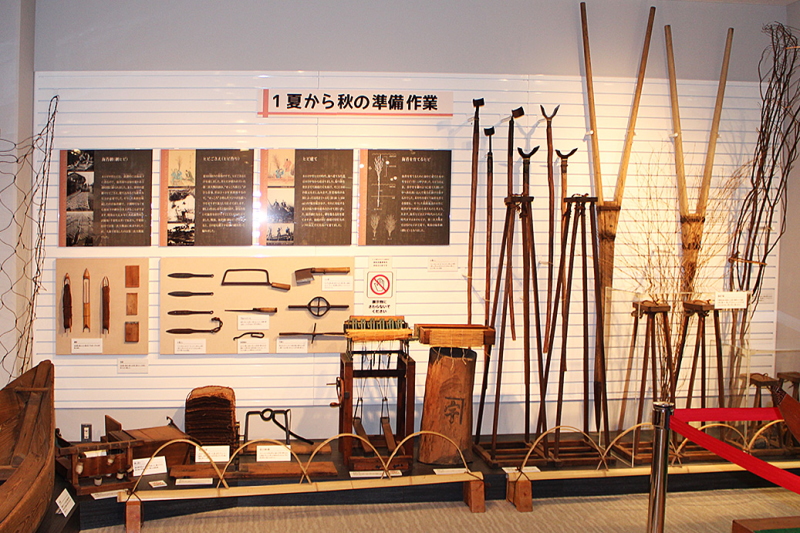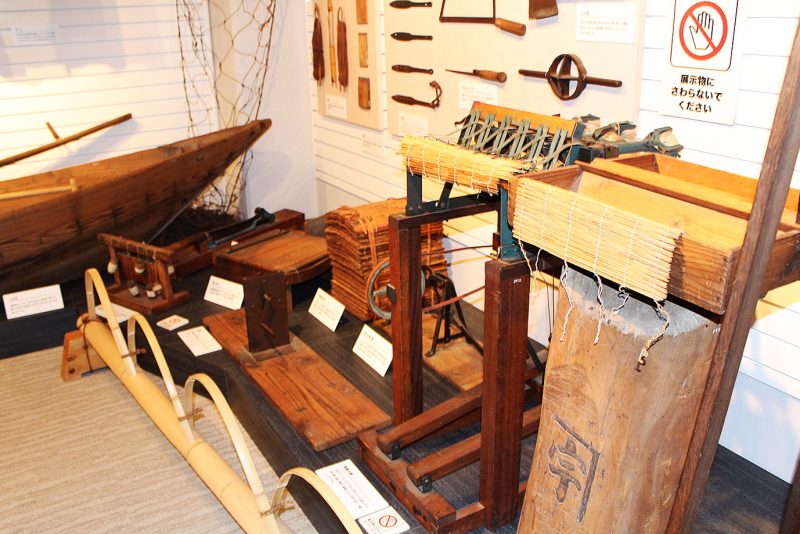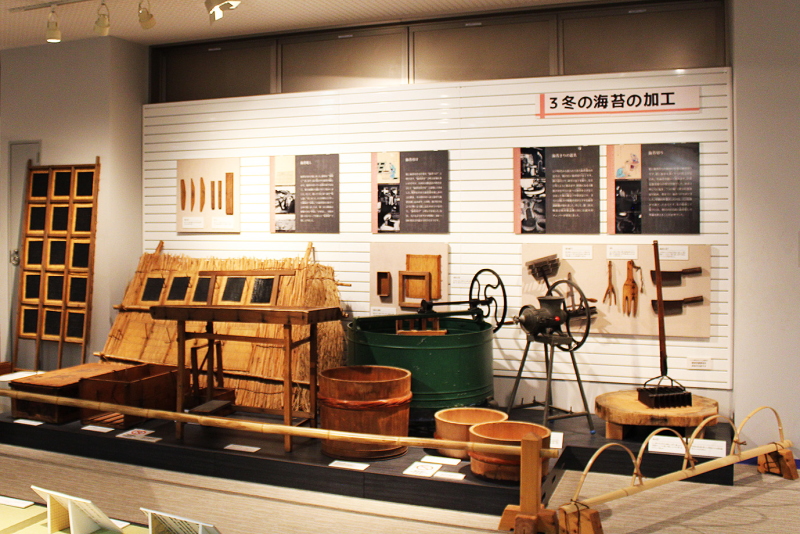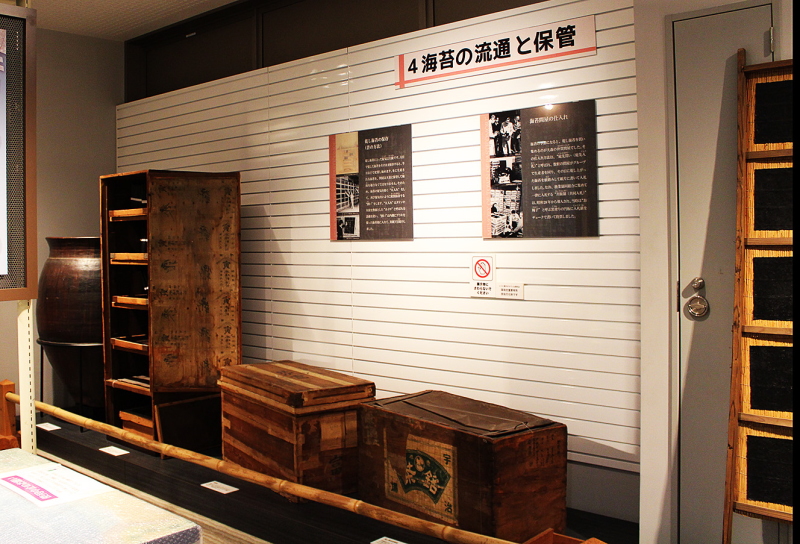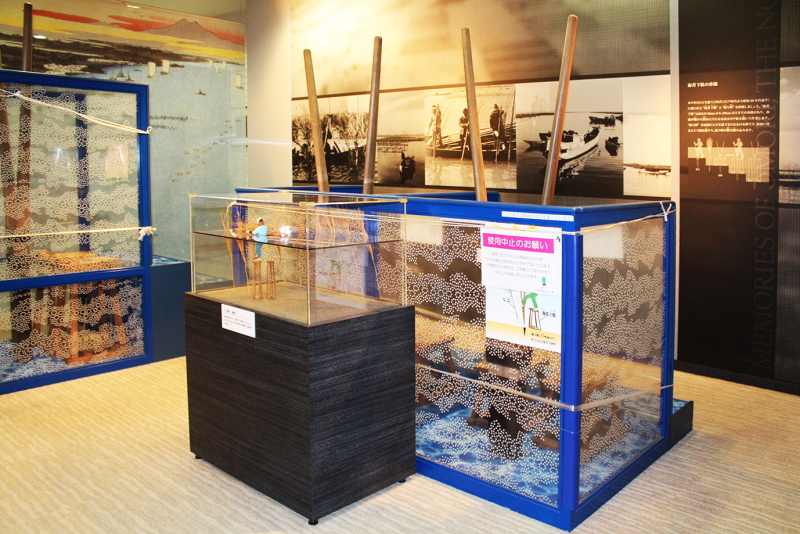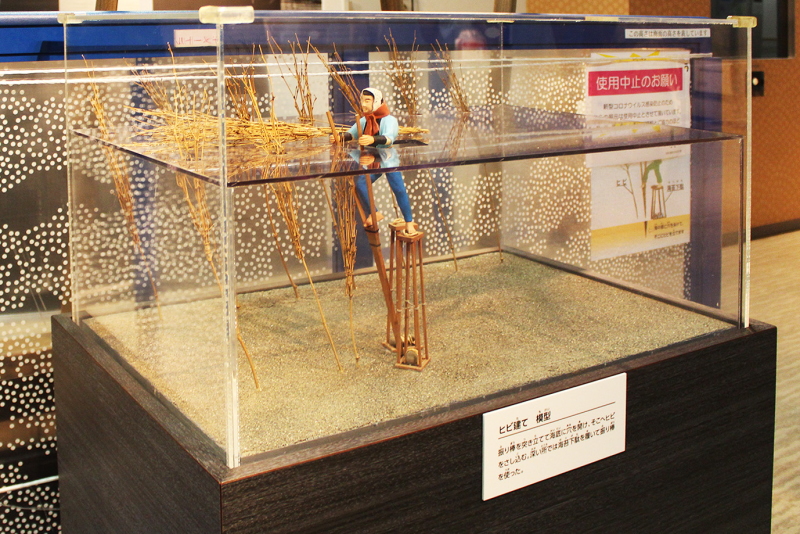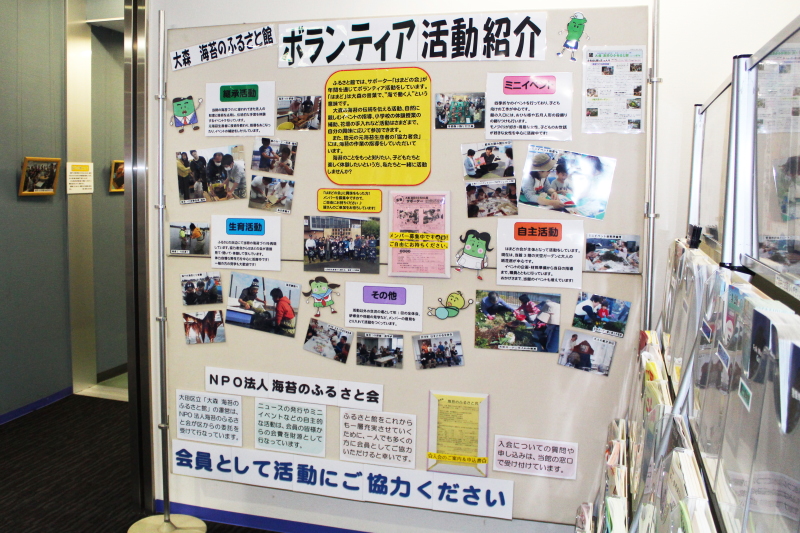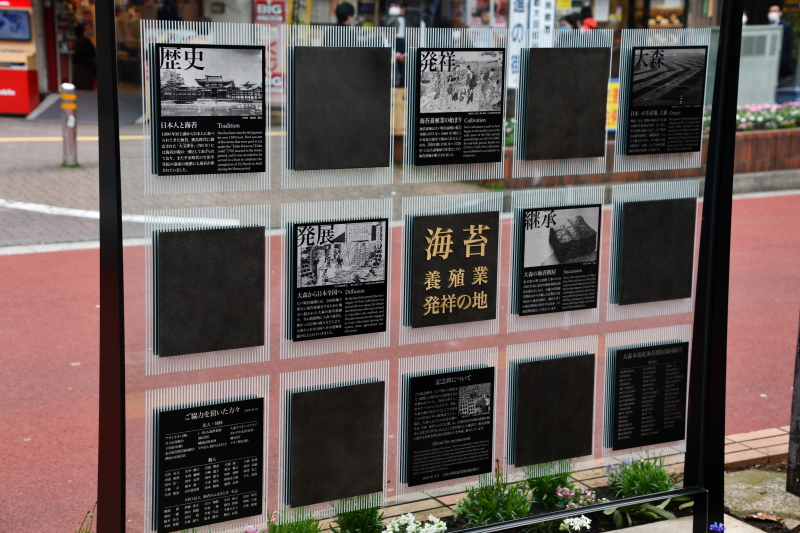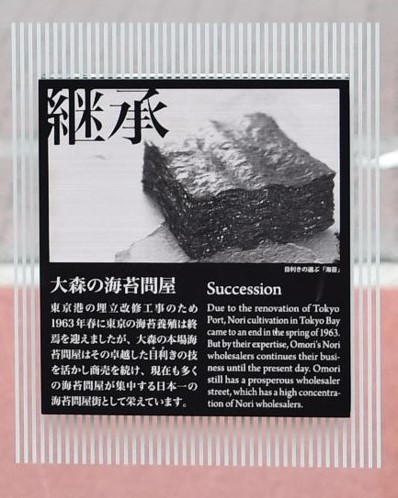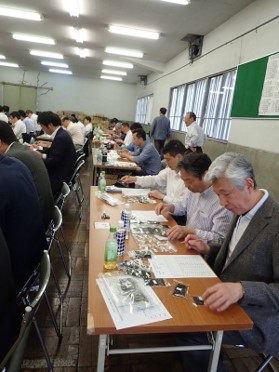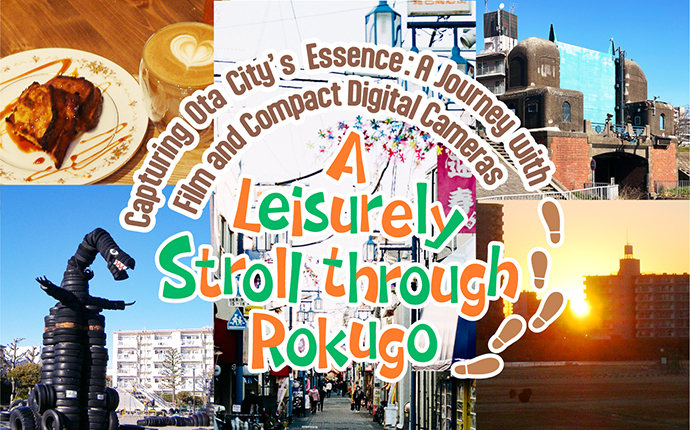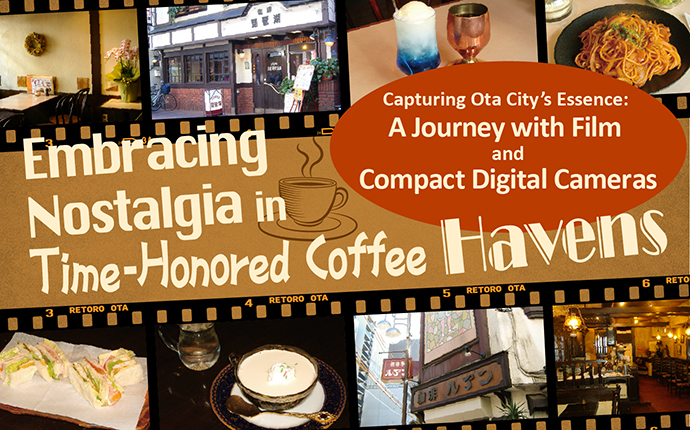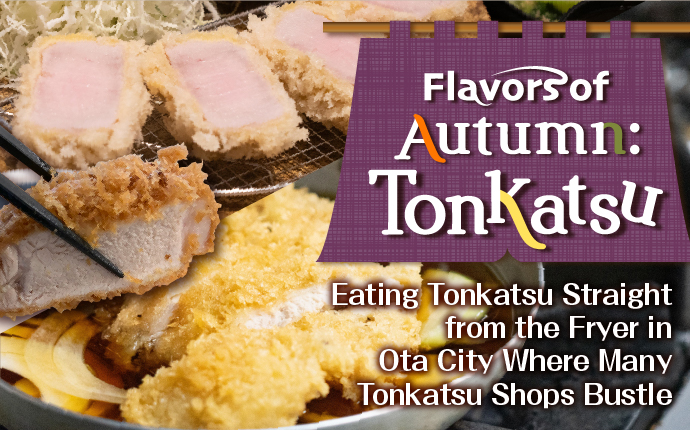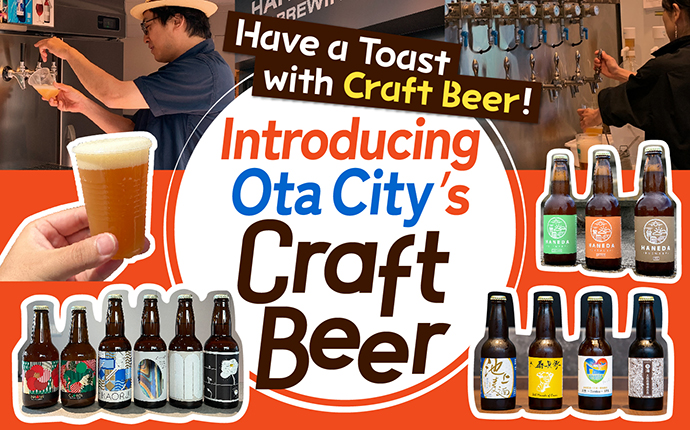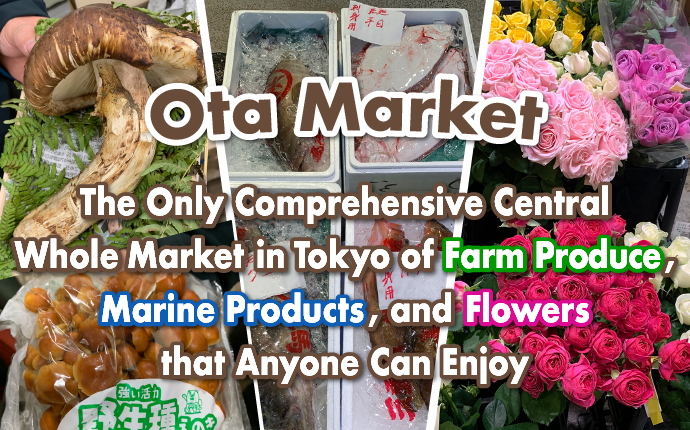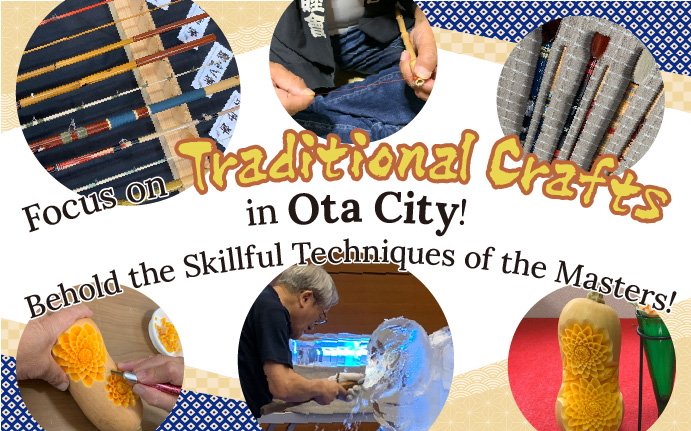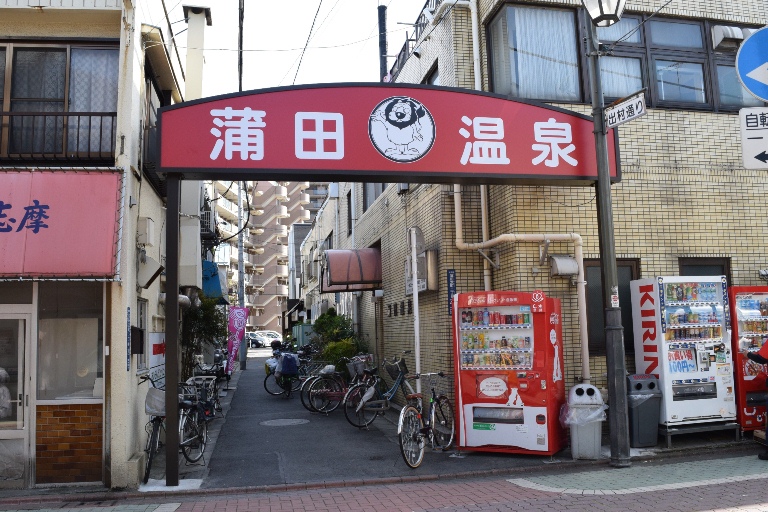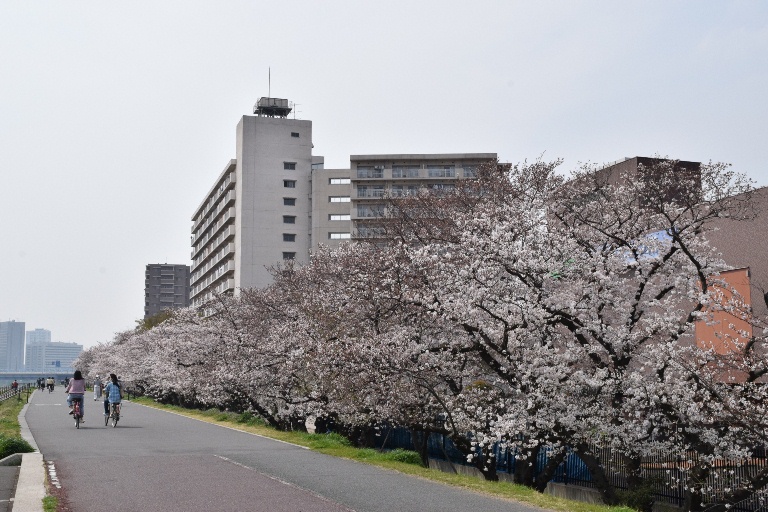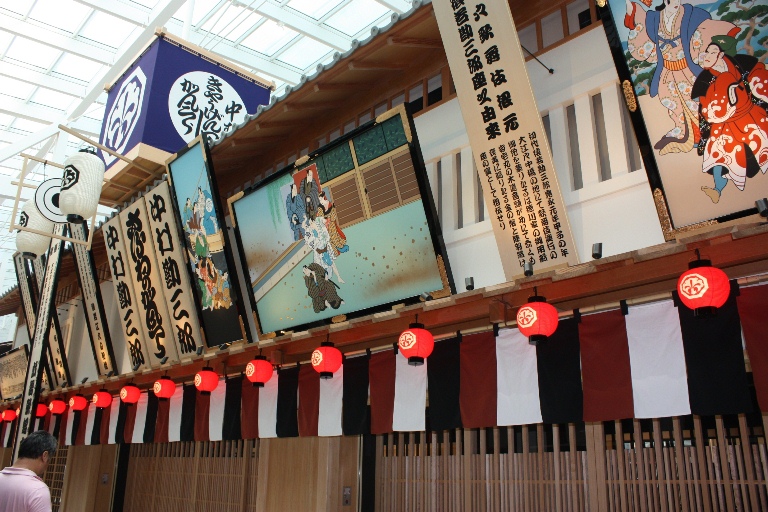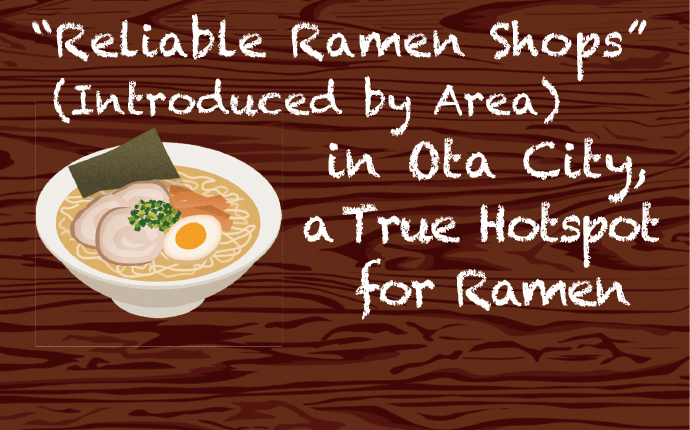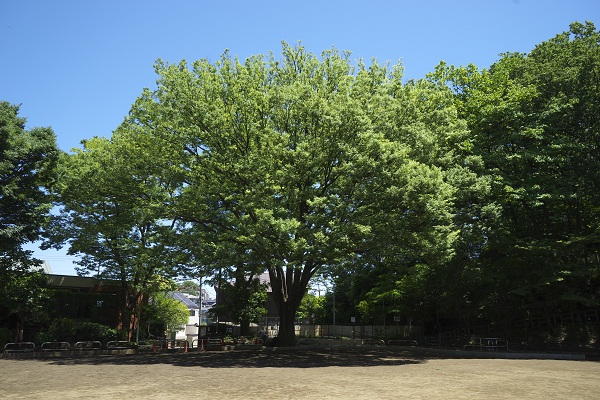Ota City boasted the highest production of nori nationwide until the beginning of the Showa period. Starting in 2019, to let everyone experience the taste of nori from Omori, Ota City, around the Nori Day (*), which is February 6, the Omori Nori Wholesales Cooperative coordinated with the board of education to perform dietary education around the theme of nori, such as give lessons on the history of nori production in elementary schools and middle schools within Ota City, and local wholesale merchants to provide nori to schools for school lunches. On February 5, 2021, 53 elementary schools and 18 middle schools under the management of Ota City served school lunches with nori.
* What is the Nori Day?
In the oldest statutory law in Japan, the Taiho Code, nori was specified as a commodity that could be presented as payment for taxes, which demonstrates how valuable the food was. The Taiho Code was enforced on February 6, 702, which is why February 6 is the Nori Day.
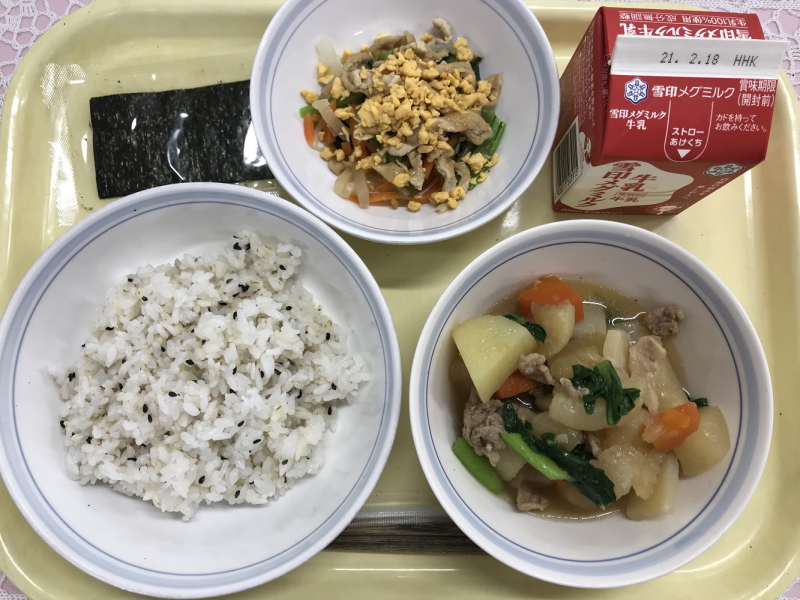
School lunch at Shimoda Elementary School in Ota City.
You can see that the roasted nori sent from the Omori Nori Wholesales Cooperative has been used for school lunches.
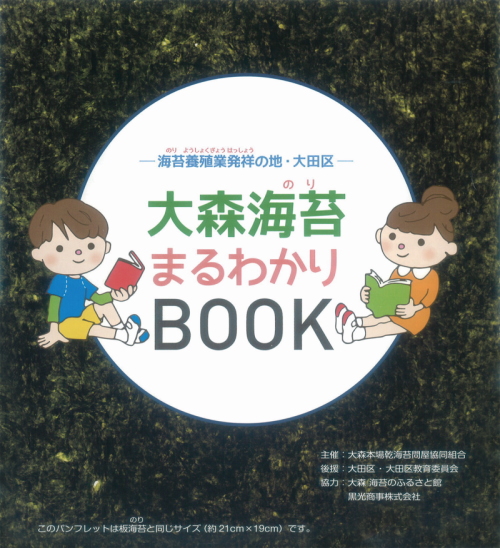
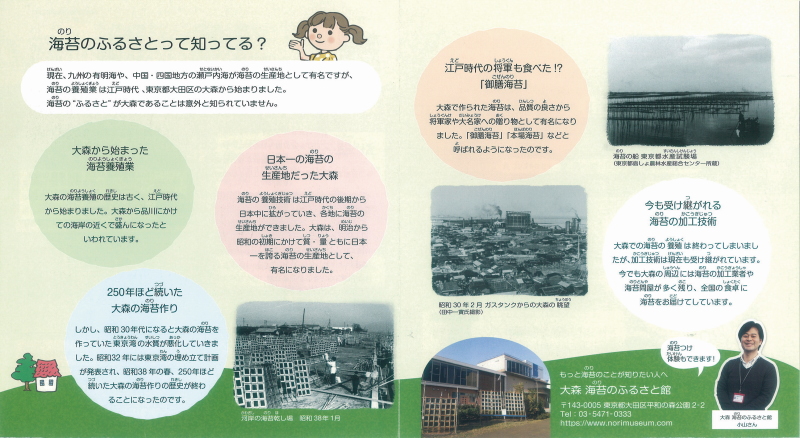
A pamphlet distributed for a dietary education lesson about nori. It introduces all kinds of information about nori, such as recipes using nori, in an easy to understand and fun manner!
This pamphlet can also be obtained at the Omori Nori Museum.
At the Omori Nori Museum in Omori Furusato-no-Hamabe Park, they hold experiential sessions on the traditional process of producing nori. 3rd grade students in Ota City’s elementary schools participate in this session.

People with experience working in nori production kindly give sessions.
(The photo is from an experiential session for the general public in 2018. Currently, due to the countermeasures related to COVID-19, the staff of the museum teaches the sessions.)
Why is nori cherished in Ota City? We will explain about that while introducing some locations related to nori.

